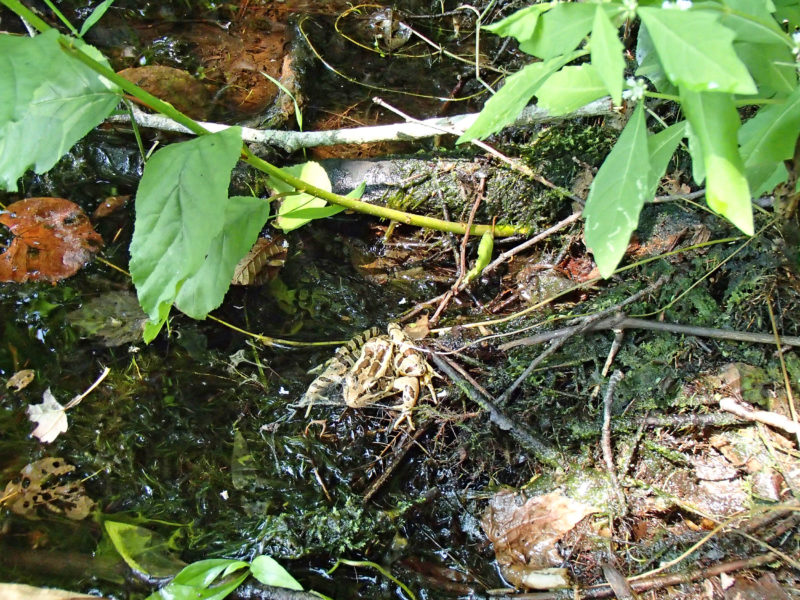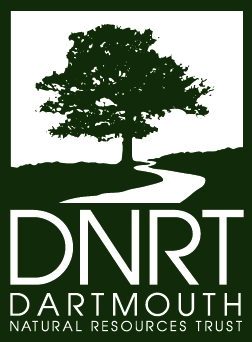Smith Farm
Discover beautiful ponds, salt marshes, and forested wetlands at Smith Farm, a 140-acre former dairy farm in South Dartmouth. With well-marked trails leading to an observation platform overlooking Nonquitt Marsh, this Dartmouth Natural Resources Trust property offers an interesting place to walk, watch wildlife, and explore nature.
Features

Look out for wildlife in Smith Farm’s swamps and wetlands, like this pickerel frog hiding at the edge of a vernal pool.
Nestled between the communities of Nonquitt and Round Hill, Smith Farm offers a peek at coastal habitats that are otherwise hidden from public view. Though it’s called a “farm,” Smith Farm is rich with natural areas like forested swamps, salt marshes, and a large horseshoe-shaped trout pond in the woods. It’s a quiet alternative to busy Cornell Farm, located just a mile away on Smith Neck Road.
One of the best features at Smith Farm is the wildlife observation platform at the end of the trail, which provides a spectacular view of Nonquitt Marsh and Buzzards Bay. Bring your camera or binoculars and plan to stay awhile as you watch for ospreys, egrets, and herons.
Trails
Smith Farm’s network of trails runs for roughly two miles through woods, wetlands, and meadows. We recommend you wear boots when you walk here, as the trails tend to be wet in many places. Altogether, you can enjoy this round-trip walk in about an hour. (Download trail map)
An open field welcomes you to the trailhead at Smith Farm. Begin your walk down the Orange Trail, or detour through upland fields and forests along the Red Trail. Crushed clam shells line this portion of the Orange Trail, providing a dry path to walk between wet wooded swamps and a certified vernal pool.
The Orange Trail eventually forks, and you can go in one of two directions. Walk left through the meadow to reach Horseshoe Pond and the Blue Trail, where raised boardwalks help keep your feet dry. Or walk right for the most direct route to the wildlife observation platform.
Habitats & Wildlife
From farmland and forests to ponds, swamps, and salt marshes, Smith Farm is home to nearly every type of natural habitat found in Dartmouth. A variety of trees decorate the landscape: maple, willow, cherry, holly, oak, pine, cedar, birch, and sassafras, to name a few. Ferns, wildflowers, and sphagnum moss grow in the lush wetland areas, while blueberry and winterberry thrive in the forest understory.
With so many different habitats, Smith Farm is home to a wealth of wildlife. Gently explore near the vernal pool, pond, and wetlands to find frogs, turtles, and salamanders, particularly in spring and summer. In the drier open meadows, look for songbirds and woodland mammals flitting among the tall grasses. But the real wildlife magnet is Nonquitt Marsh, which was restored in 2014 to allow the tides of Buzzards Bay to flow in and out of the marsh more easily.

 Download Property Map
Download Property Map